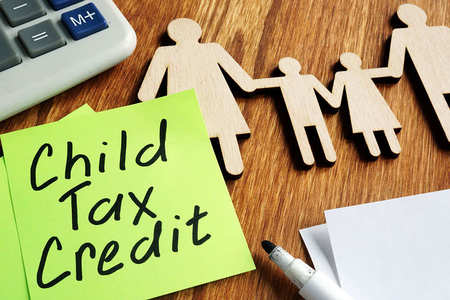
Parents and guardians who care for one or more children should know how valuable the child tax credit is. This tax credit is available for qualified filers who have a child under the age of 17. Since it was enacted in 1997 and since then has helped millions of people with the costs of rearing a child. Up to $2,000 is now available per child. The new administration is hoping to expand the child tax credit, on a temporary basis as part of a COVID-19 relief plan. While the measures still need to pass on the Congressional floor, there are some exciting aspects of the proposal that are worth knowing.
A Higher Limit
The proposal includes a limit increase that would mean a maximum of $3,000 instead of $2,000 per child under the age of 17. Filers with children aged under six years old could get a child tax credit of up to $3,600. Further, the credit would be 100% refundable instead of partially refundable, as it is now. Note that these higher limits would only be temporary. It’s likely that they would not continue into 2022.
What is the Child Tax Credit?
The child tax credit is intended to help lower income families with the costs associated with child rearing. It is a tax credit, which reduces the amount of tax you owe. If you file your taxes and don’t owe anything, or the amount of the child tax credit is more than the amount you owe, you can get a tax refund. As mentioned above, as of 2021, 100% of the child tax credit is refundable. Also, if you are getting a tax refund, the child tax credit can even increase the amount of your tax refund. This is why it’s such a valuable tax credit, yet many tax payers don’t avail of it. Your CPA can assist with ensuring you get the appropriate amount of child tax credit.
Who Qualifies For a Child Tax Credit?
The first qualification in order to get the child tax credit is that the filer must provide the child’s social security number. Note that prior to 2021, you were able to simply use an ATIN (adoption taxpayer identification number) or an ITIN (individual taxpayer identification number). It’s easy to get a social security number for a child, but it does take a few weeks to process, so it’s best to start that process as early as possible after a child is born.
The second qualification to be aware of is that the child cannot have turned 17 before the end of the tax filing year. If the child’s birthday is December 31 and they turned 17, they don’t qualify.
The third qualification is that the child is a U.S. citizen, U.S. national or a permanent resident alien. If you have questions about this qualification, speak to your CPA.
The next qualification is that the child must be at least 50% financially dependent upon the tax filer. They can’t have provided more than half of their own support, such as shelter, food, clothing, etc.
The child must have resided with the tax filer for at least six months of the tax year. You may need to provide proof through documents such as school records, employment records, etc. Exceptions to this requirement include:
• A child away for a holiday, medical reasons or a business-related trip.
• A child away in a juvenile detention center
• A child away due to divorced or separated parents
• A child away for boarding school or military reasons
There must be an official relationship between the tax filer and the child, such as:
• Foster child
• Natural child
• Descendant
• Adopted child
• Sibling/step-sibling/half-sibling
• And more
The child can’t have filed a married filing jointly return.
There may be other ways to get tax credit help for rearing children if your child doesn’t qualify under the criteria mentioned above. Talk to your CPA about the possibility of qualifying for the Other Dependent Child (ODC) credit, which is available for certain children over the age of 17.
Income Requirements For the Child Tax Credit
Because the child tax credit is intended to help lower income families, there are income limitations in order to qualify:
• If you earned less than $2,500 in the tax year, you are ineligible to claim the child tax credit.
• For a full tax credit, single tax payers can’t have a modified adjusted gross income of over $200,000.
• For a full tax credit, married filing jointly tax payers can’t have a modified adjusted gross income of over $400,000.
• The child tax credit amount is reduced by 5% for every $1,000 over the thresholds of $200,000 and $400,000.
Claiming the Child Tax Credit on Your Tax Returns
Your CPA is available to assist you with claiming the child tax credit on your tax returns. The credit is available on forms 1040, 1040-SR, and 1040-NR. You’ll need to provide your CPA with your child’s social security number, name and address. Note that if you tried to claim the child tax credit any time after 2015 and it was denied, you or your CPA will need to file Form 8862.
Don’t miss out on the child tax credit if you and your child qualify. If you’re unsure whether or not you meet the criteria, it’s worth giving your CPA a call to find out for certain. The temporary expansion of the child tax credit for 2021 makes this credit even more valuable to families who are struggling due to COVID-19. Talk to your CPA today.
